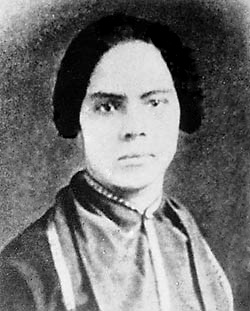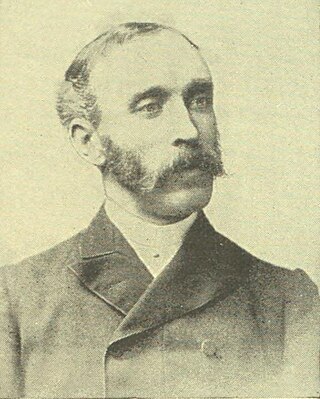Related Research Articles

John Graves Simcoe was a British Army general and the first lieutenant governor of Upper Canada from 1791 until 1796 in southern Ontario and the watersheds of Georgian Bay and Lake Superior. He founded York, which is now known as Toronto, and was instrumental in introducing institutions such as courts of law, trial by jury, English common law, and freehold land tenure, and also in the abolition of slavery in Upper Canada.

United Empire Loyalist is an honorific title which was first given by the 1st Lord Dorchester, the Governor of Quebec and Governor General of the Canadas, to American Loyalists who resettled in British North America during or after the American Revolution. At that time, the demonym Canadian or Canadien was used to refer to the indigenous First Nations groups and the descendants of New France settlers inhabiting the Province of Quebec.

Mary Ann Camberton Shadd Cary was an American-Canadian anti-slavery activist, journalist, publisher, teacher, and lawyer. She was the first black woman publisher in North America and the first woman publisher in Canada. She was also the second black woman to attend law school in the United States. Mary Shadd established the newspaper Provincial Freeman in 1853, which was published weekly in southern Ontario. it advocated equality, integration, and self-education for black people in Canada and the United States.

Slavery in Canada includes historical practices of enslavement practised by both the First Nations until the 19th century, and by colonists during the period of European colonization.

Henry Box Brown was a 19th-century Virginia slave who escaped to freedom at the age of 33 by arranging to have himself mailed in a wooden crate in 1849 to abolitionists in Philadelphia, Pennsylvania.

Black Canadians, also known as Afro-Canadians, are people of full or partial sub-Saharan African descent who are citizens or permanent residents of Canada. The majority of Black Canadians are of Caribbean and African immigrant origin, though the Black Canadian population also consists of African Americans in Canada and their descendants. Black Canadian migration from Africa has risen substantially since 2011.

Yorkville is a neighbourhood and former village in Toronto, Ontario, Canada. It is roughly bounded by Bloor Street to the south, Davenport Road to the north, Yonge Street to the east and Avenue Road to the west, and it is part of The Annex neighbourhood. Established as a separate community in 1830, it was annexed into Toronto in 1883. Yorkville comprises residential areas, office space, and retail shopping.

Williams Omnibus Bus Lines was the first mass transportation system in the old City of Toronto, Ontario, Canada with four six-passenger buses. Established in 1849 by local cabinetmaker Burt Williams, it consisted of horse-drawn stagecoaches operating from the St. Lawrence Market to the Red Lion Hotel in Yorkville. The bus line was a great success, and four larger vehicles were added in 1850. After a few years, even more buses were in use, and were operating every few minutes. In 1861, the city gave a 30-year franchise for to Toronto Street Railways who built a horse car line, and the gauge of the buses was modified so as to fit between the tracks. The bus system lasted only until 1862, when it was bought out by the TSR. The omnibuses were manufactured by Williams' own cabinet-making store on Yonge Street, H. Burt Williams.

Sir John Beverley Robinson, 1st Baronet, was a lawyer, judge and political figure in Upper Canada. He was considered the leader of the Family Compact, a group of families which effectively controlled the early government of Upper Canada.

Downtown Toronto is the main central business district of Toronto, Ontario, Canada. Located entirely within the district of Old Toronto, it is approximately 16.6 square kilometres in area, bounded by Bloor Street to the northeast and Dupont Street to the northwest, Lake Ontario to the south, the Don Valley to the east, and Bathurst Street to the west. It is also the home of the municipal government of Toronto and the Government of Ontario.

Henry Walton Bibb, was an American author and abolitionist who was born into slavery. Bibb told his life story in his Narrative of the Life and Adventures of Henry Bibb, An American Slave, which included many failed escape attempts followed finally by success when he escaped to Detroit. After leaving Detroit to move to Canada with his family, due to issues with the legality of his assistance in the Underground Railroad, he founded the abolitionist newspaper, Voice of the Fugitive. He lived in Canada until his death.
Cainsville is a community straddling the boundary of Brantford and Brant County in Ontario, Canada.

John Travers Lewis was a Church of England clergyman, archbishop, and author. He was the Archbishop of Ontario, third Metropolitan of (Eastern) Canada, and the first Bishop of Ontario (Kingston).
Johan Jost Herkimer was a Loyalist born in 1732, the second of five sons of Johan Jost Herkimer and Anna Catherine Petri of German Flatts, Province of New York. He was the younger brother of the American Patriot General Nicholas Herkimer.

Elmore Harris was a Canadian Baptist pastor. He was the founder of the Walmer Road Baptist Church and one of the founders of Toronto Bible Training School in 1894 which soon changed its name to Toronto Bible College.
Patrick Joseph Larkin was a Canadian ship's captain, businessman and politician.
James Rufus Bratton (1821–1897) was a doctor, army surgeon, civic leader, and leader in the Ku Klux Klan in South Carolina with whom he was guilty of committing numerous crimes. Bratton trained in medicine in Philadelphia in the 1840s but spent most of his life in Yorkville, South Carolina. He joined the Confederate Army as an assistant surgeon in April 1861, the opening month of the American Civil War. After the war, he became an opponent of Reconstruction and a leader of the Ku Klux Klan. He was one of the leaders linked in the lynching and killing of local black leader Jim Williams. This led to a string of violent attacks which eventually led to a large group of York County blacks emigrating to Liberia. Bratton fled to London, Ontario, to escape prosecution, but later was able to return to South Carolina, where he pursued his career in medicine for the remainder of his life.
William King was an Irish-born minister and abolitionist. He founded the Elgin settlement, a community of former African-American slaves, in southwestern Ontario.

Black Canadians migrated north in the 18th and 19th centuries from the United States, many of them through the Underground Railroad, into Southwestern Ontario, Toronto, and Owen Sound. Black Canadians fought in the War of 1812 and Rebellions of 1837–1838 for the British. Some returned to the United States during the American Civil War or during the Reconstruction era.
References
- 1 2 3 4 Shadd, Adrienne L. (2022). The underground railroad : next stop, Toronto!. Afua Cooper, Karolyn Smardz Frost (New ed.). Toronto: Toronto: Dundurn Press. pp. 85–86. ISBN 978-1-4597-4897-2. OCLC 1273207252.
- 1 2 3 "Black History Month 2006: The James Mink Story" . Retrieved 2009-02-19. Archived 2008-11-21 at the Wayback Machine
- ↑ O'Connor, James (1996-04-12). "TV Weekend: Slavery as Experienced By a Mixed-Race Couple". New York Times. Retrieved 2009-02-19.
- ↑ Petrin, Guylaine (Spring 2016). "The Myth of Mary Mink: Representation of Black Women in Toronto in the Nineteenth Century". Ontario History. 107 (1): 92–110. doi: 10.7202/1050613ar . Retrieved 30 March 2020.